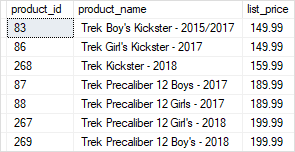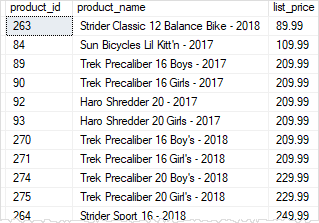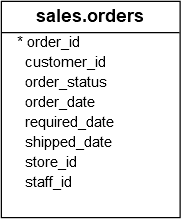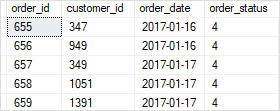Summary: in this tutorial, you will learn how to use the SQL Server BETWEEN operator to specify a range to test.
Overview of the SQL Server BETWEEN operator
The BETWEEN operator is a logical operator that allows you to specify a range to test.
The following illustrates the syntax of the BETWEEN operator:
column | expression BETWEEN start_expression AND end_expression
Code language: SQL (Structured Query Language) (sql)In this syntax:
- First, specify the column or expression to test.
- Second, place the
start_expressionandend_expressionbetween theBETWEENand theANDkeywords. Thestart_expression,end_expressionand theexpressionto test must have the same data type.
The BETWEEN operator returns TRUE if the expression to test is greater than or equal to the value of the start_expression and less than or equal to the value of the end_expression.
You can use the greater than or equal to (>=) and less than or equal to (<=) to substitute the BETWEEN operator as follows:
column | expression <= end_expression AND column | expression >= start_expression
Code language: SQL (Structured Query Language) (sql)The condition that uses the BETWEEN operator is much more readable than the one that uses the comparison operators >=, <= and the logical operator AND.
To negate the result of the BETWEEN operator, you use NOT BETWEEN operator as follows:
column | expression NOT BETWEEN start_expression AND end_expresion
Code language: SQL (Structured Query Language) (sql)The NOT BETWEEN returns TRUE if the value in the column or expression is less than the value of the start_expression and greater than the value of the end_expression. It is equivalent to the following condition:
column | expression < start_expression AND column | expression > end_expression
Code language: SQL (Structured Query Language) (sql)Note that if any input to the BETWEEN or NOT BETWEEN is NULL, then the result is UNKNOWN.
SQL Server BETWEEN examples
Let’s take some examples of using the BETWEEN operator to understand how it works.
A) Using SQL Server BETWEEN with numbers example
See the following products table from the sample database:

The following query finds the products whose list prices are between 149.99 and 199.99:
SELECT
product_id,
product_name,
list_price
FROM
production.products
WHERE
list_price BETWEEN 149.99 AND 199.99
ORDER BY
list_price;
Code language: SQL (Structured Query Language) (sql)
To get the products whose list prices are not in the range of 149.99 and 199.99, you use the NOT BETWEEN operator as follows:
SELECT
product_id,
product_name,
list_price
FROM
production.products
WHERE
list_price NOT BETWEEN 149.99 AND 199.99
ORDER BY
list_price;
Code language: SQL (Structured Query Language) (sql)
B) Using SQL Server BETWEEN with dates example
Consider the following orders table:

The following query finds the orders that customers placed between January 15, 2017 and January 17, 2017:
SELECT
order_id,
customer_id,
order_date,
order_status
FROM
sales.orders
WHERE
order_date BETWEEN '20170115' AND '20170117'
ORDER BY
order_date;
Code language: SQL (Structured Query Language) (sql)
Notice that to specify a literal date, you use the format ‘YYYYMMDD‘ where YYYY is 4-digit year e.g., 2017, MM is 2-digits month e.g., 01 and DD is 2-digits day e.g., 15.
In this tutorial, you have learned how to use the SQL Server BETWEEN operator to form a condition that tests against a range of values.